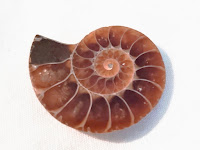It doesn't matter if it's cute furry mammals or creepy crawly insects, most kids love learning about animals. In this post I've compiled all of my zoology related blog posts and printable resources, plus links to some of my favorite books, videos, and websites for learning about the animal kingdom.
Blog Posts
Links to loads of activity ideas and resources for teaching your kids about birds
Information, resources, and activity ideas for studying penguins
Information, resources, and activity ideas for studying hummingbirds
Learning About Ducks and Other Waterfowl
Information, resources, and activity ideas for studying waterfowl
Learning About Herons and Egrets
Information, resources, and activity ideas for studying herons and egrets
Learning About Eagles and Other Raptors
Information, resources, and activity ideas for studying raptors
Activities, resources, and information for studying owls
Learning About Bird Flight and Migration
Hands-on activity ideas for learning about avian flight and migration
Learn all about the different types of nests that birds make, plus instructions for a hands-on learning activity
Learning About Birds: the Relationship Between Beak and Diet
Learn about common bird beak types and the relationship between beak type and diet with this fun hands-on activity
Activities and resources for learning about bird eggs
Activities and resources for learning about feathers
Instructions for a simple ladybug lifecycle craft
Activities and resources for learning about butterflies
Activities and resources for learning about snails
Activities and Resources for Learning About Jellyfish
Information, activities, and links to videos about jellyfish
Learning About the Mesozoic Era- The Age of the Dinosaurs
Information, activities, and resources for learning about dinosaurs and the other animals of the Mesozoic Era
Learning About Prehistoric Animals- The Paleozoic Era
Information, activities, and resources for learning about all the fascinating animals of the Paleozoic Era
Learning About Prehistoric Animals- The Cenozoic Era
Information, activities, and resources for learning about the animals of the Cenozoic Era (includes early Cenozoic animals, ice age animals, and early man)
All About Birds Printable Unit Study
Learn all about bird beaks, nests, eggs, the avian lifecycle, bird anatomy, migration, feathers and more with this 33-page printable unit study. Includes 14 informational pages, vocabulary words, 4 diagram posters, worksheets, a crossword puzzle, a word search, 2 art activities, a STEM activity, instructions for several hands-on activities, and more!
All About Insects Learning Pack
Learn all about what makes an insect an insect, insect classification, insect anatomy, metamorphosis, pollinators, and more with this 21-page printable learning pack. Includes 6 informational sheets, butterfly fact cards, an insect order sorting chart, a crossword puzzle, a word search, a coloring page, vocabulary words, journaling sheets, and more!
This 17-page zoology vocabulary pack includes: 45 flash cards with zoology related vocabulary words and definitions, 4 posters, 2 worksheets, a crossword puzzle, and notebooking sheets.
Insect Family Tree Sorting Chart
Introduce your kids or students to the world of entomology with this insect family tree sorting chart. It teaches children about the most well-known insect orders and about how insects evolved over time. Includes an insect family tree and an insect family tree sorting chart.
Butterfly Lifecycle Coloring Sheet
Learn about the lifecycle of a butterfly with this free coloring sheet.
Owl digestion diagram- perfect for owl pellet dissections and bird studies!
Learn about the parts of a feather with this free cut and paste worksheet.
Animals of the Rainforest Cut & Paste Activity
Free cut and paste worksheet about the layers of the Amazon Rainforest and the animals that live there.
How Penguins Stay Warm and Dry Activity
Learn about how penguins stay warm and dry in the frigid waters around Antarctica with this simple coloring activity.
Additional Resources
YouTube Channels:
(this one technically isn't a channel, but a list of channels)
Books:
National Geographic Animal Encyclopedia
Usborne World of Animals
The National Geographic Everything series
DK Animal Encyclopedia
Websites:
National Geographic Kids- Animals
DK Find Out- Animals and Nature
















.png)








Comments
Post a Comment